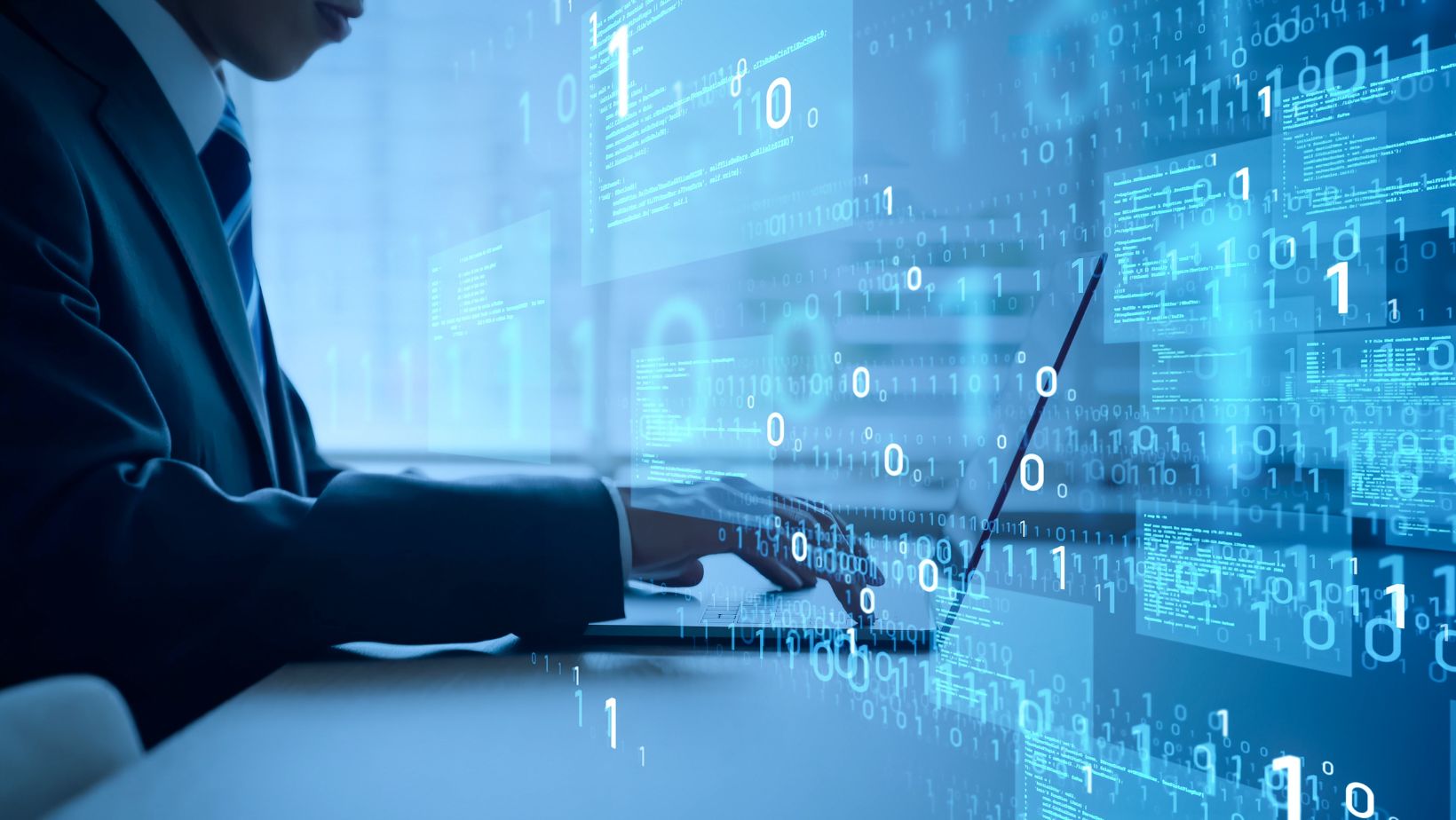In the ever-evolving world of technology, the terms “software” and “program” often spark confusion. While many use them interchangeably, understanding their distinctions is crucial for anyone navigating the digital landscape. Each plays a vital role in how devices operate and perform tasks, yet they encompass different concepts.
Software refers to a broad category that includes all types of digital tools and applications, from operating systems to mobile apps. A program, on the other hand, is a specific set of instructions designed to perform a particular task within that software framework. Grasping these differences not only enhances one’s tech literacy but also empowers users to make informed choices in a technology-driven society.
Key Takeaways
- Distinction: Software is a broad category encompassing all digital tools, while a program consists of specific instructions within that software to perform a defined task.
- Functionality: Software offers extensive capabilities, combining multiple functionalities, whereas programs execute specific operations, such as calculations or data processing.
- Scope and Complexity: Software includes multiple programs and systems, while programs focus on singular tasks, highlighting the comprehensive nature of software as a collection of interrelated components.
- Variety of Examples: Software examples include operating systems and applications (e.g., Microsoft Windows, Adobe Photoshop), while program examples include web browsers and spreadsheets (e.g., Google Chrome, Microsoft Excel).
- Evolution: The development of software and programs has transformed from simple tasks in the 1950s to sophisticated, cloud-based solutions and AI-driven applications today, reflecting advancements in technology and user needs.
Software Vs Program
Understanding the difference between software and a program enhances clarity in technology discussions. Software encapsulates all digital tools, while a program refers to specific instructions within that software.
Definition of Software
Software refers to a collection of instructions, data, and programs that enable a computer or electronic device to perform tasks. This category includes operating systems, applications, and middleware. Notable examples of software include Microsoft Windows, Adobe Photoshop, and various mobile applications. According to the International Data Corporation (IDC), the global software market was valued at approximately $501 billion in 2021, reflecting its vast scope and significance.
Definition of Program
A program consists of a specific sequence of coded instructions designed to execute particular operations. Programs instruct computers to perform tasks like calculations, data processing, or user interactions. Common examples of programs include web browsers, spreadsheets, and database management systems. In 2020, the programming market grew significantly, driven by demand for software solutions that address complex challenges across industries.
Key Differences Between Software and Program

Understanding the key distinctions between software and programs enhances tech literacy. These differences become evident through functionality, scope, and complexity.
Functionality
Functionality refers to software’s extensive capabilities compared to a program’s specific tasks. Software encompasses diverse functionalities, including data processing, user interfaces, and system security. For instance, Microsoft Office integrates word processing, spreadsheet manipulation, and presentation design. In contrast, a program executes particular functions, such as calculating totals in a spreadsheet or rendering a web page in a browser. This specificity defines how software operates on a broader level while programs focus on targeted tasks.
Scope and Complexity
Scope and complexity differentiate software’s overarching presence from a program’s singular focus. Software includes multiple programs and systems, serving various needs across organizations and industries. Examples of software include operating systems like Linux and applications like graphic design software. Programs, however, are components within software that provide specific functionalities, ranging from simple scripts to advanced algorithms. This distinction highlights software as a complex system consisting of various interrelated programs designed to work together to achieve comprehensive digital operations.
Examples of Software and Programs

Numerous examples illustrate the distinctions between software and programs. Each category encompasses various types that fulfill different roles within digital environments.
Types of Software
- Operating Systems: These foundational software elements manage hardware and system resources, facilitating the functioning of applications. Examples include Microsoft Windows, macOS, and Linux.
- Application Software: This category includes programs designed to perform specific tasks for users. Examples include Microsoft Office Suite, Adobe Creative Cloud, and web browsers like Google Chrome.
- System Software: This software supports application software and provides key services for the computer. Examples include device drivers and utility software like antivirus programs.
- Development Software: These tools assist developers in creating applications or systems. Examples include integrated development environments (IDEs) like Visual Studio and software version control systems like Git.
- Database Software: These applications manage and organize data efficiently. Examples include Oracle Database, MySQL, and Microsoft SQL Server.
- Web Browsers: These programs load and display web pages, allowing users to navigate the internet. Examples include Google Chrome, Mozilla Firefox, and Safari.
- Spreadsheets: These programs enable users to organize, analyze, and visualize data. Examples include Microsoft Excel and Google Sheets.
- Media Players: These programs play audio and video files, providing entertainment. Examples include VLC Media Player and Windows Media Player.
- Compilers: These programs translate code written in programming languages into executable files. Examples include GCC for C/C++ and Java Development Kit (JDK) for Java programming.
- Games: These interactive programs provide entertainment through gameplay mechanics. Examples include Fortnite and The Sims.
Understanding these specific categories enhances comprehension of how software and programs operate within technology, highlighting their unique purposes and functions.
The Evolution of Software and Programs

The evolution of software and programs reflects significant advancements in technology and user needs. Understanding their historical context and current trends enhances comprehension of their roles in today’s digital landscape.
Historical Perspective
The term “software” emerged in the 1950s as computers transitioned from hardware-based operations to coded instructions. Early software consisted of primitive programs designed to perform specific tasks, often written in assembly language. The introduction of high-level programming languages in the 1960s, such as Fortran and COBOL, revolutionized software development, allowing for more complex and robust programs. During this time, software began expanding beyond individual programs to include operating systems, which managed computer resources and supported multiple applications simultaneously.
Throughout the 1970s and 1980s, the software industry rapidly matured with the advent of personal computers. This era witnessed the creation of major operating systems like Microsoft DOS and later Windows, leading to the stability and usability of software. Software packages evolved, introducing integrated tools that combined functionalities, such as word processors and spreadsheets under a single application umbrella, marking a significant shift toward comprehensive software solutions.
Current Trends
Current trends in software and programs emphasize cloud computing, artificial intelligence, and mobile application development. The rise of cloud-based software, such as SaaS (Software as a Service), enables users to access applications via the internet, promoting collaboration and flexibility. This trend shifts the focus from traditional, installed software packages to subscription models, enhancing accessibility and reducing IT infrastructure costs.
Artificial intelligence continues to reshape software environments, powering intelligent programs that automate tasks, analyze data, and improve user experiences. For example, AI-driven applications in customer service and data management streamline operations across various sectors. Additionally, with the growing dominance of smartphones, mobile applications represent a crucial aspect of software evolution, catering to on-the-go users with tailored functionalities.
Overall, the evolution of software and programs demonstrates an ongoing response to technological advancements and user requirements, creating a more integrated and efficient digital ecosystem.
Software and Programs
Understanding the distinction between software and programs is essential in today’s tech-driven landscape. Software serves as the overarching category that includes various tools and applications while programs function as specific sequences of instructions within that software. This clarity not only enhances tech literacy but also empowers individuals to make informed choices about the tools they use. As technology continues to evolve with trends like cloud computing and AI, recognizing these differences will remain crucial for navigating an increasingly complex digital environment. Embracing this knowledge can lead to better utilization of resources and improved efficiency in both personal and professional settings.
